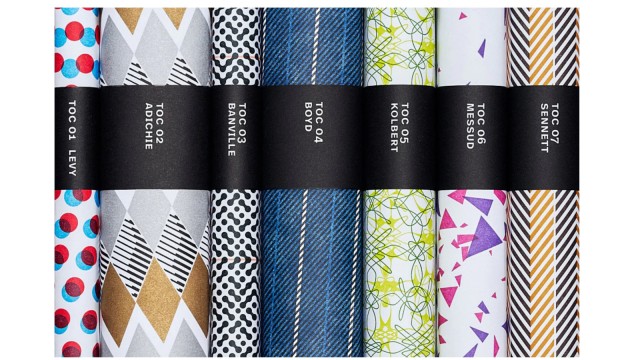Documentary: “We were in the AfD – dropouts report”
For a long time, the AfD was treated as if it were a special district of political mutants. Something that is far away – and not: an agitational organizational center at the nerve centers of a brutalizing society. The documentary “We were in the AfD”, available in the ARD media library, reports from inside this center. Six former party officials, some of them senior, appear in it.
The exit doesn’t make any leftists, no conversion stories are told here, which makes it all the more worth listening to. For example, there is Alexander Leschik, formerly on the federal executive board of the Young Alternative, a young man with a confirmation habitus, who reports how the commoners also lost their fear of the fascists in the party when they saw pensioners on the way to the party conference Left-wing activists were spat on and pushed. The public hostility “held the party together for years.” You saw the masked people at the counter-demonstrations and thought: “Then it’s legitimate that we have these edges here.”
Franziska Schreiber in particular reports vividly from inside the closing wagon castle; she was also on the federal board of the Junge Alternative. Friends and family have broken off contact with her, she says, and this is also part of the party’s strategy: “You don’t want AfD members to have a big social life outside the party, you want to keep them loyal to you.” New members would be enticed to let themselves go rhetorically, someone happens to be filming it, and then there’s no going back. At some point: Hitler salutes as an internal test of courage, as a sign of trust. Only enemies outside, only love inside. What she describes sounds like a cult.
You learn a lot in this film, for example about the unspeakable complacency of Jörg Meuthen, who in the interview is still happy about his spontaneous creation of the word “left-green” Germany. Or about the party conference at which Alice Weidel allegedly cried. But one thing in particular remains: the AfD is a loneliness machine: it attracts lonely people – to make them even lonelier. Philipp Bovermann
Exhibition: “Rudolf Levy – Magician of Color”
“View of the Bay of Rapallo” (1933) by Rudolf Levy.
(Photo: Serge Alain Domingie/Electa Archive/Museum Pfalzgalerie Kaiserslautern/dpa/Electa Archive)
The Pfalzgalerie Kaiserslautern offers the first solo exhibition ever in Germany and therefore fundamental to the work and person of Rudolf Levy, born in Stettin in 1875 and murdered in Auschwitz in 1944, with an excellent catalogue. It’s worth discovering (until February 25th) this great painter, who also studied with Henri Matisse. Glowing landscapes, pointed still lifes and deep-focus portraits show the art of constant transformation, sometimes in the style of French modernism after 1900, sometimes in a new-objective way like in Berlin in the 1920s. But all mixtures are always highly personally influenced by Levy’s color sensitivity and his curious eye. At the end, the last self-portrait, which seems to be a mask and a question at the same time: What is happening to me and my face? Harald Eggebrecht
Architecture: School of wasting time

A large concrete frame containing a greenhouse, a tree house, a kind of cocoon – and plenty of space to simply do nothing: the Huizhen High School in Ningbo, China.
(Photo: Approach Design Studio)
“A child,” says the Swedish proverb, “has three teachers: The first teacher is the other children. The second teacher is the teacher. The third teacher is the room.” The remarkable school, which was created in the eastern Chinese coastal city of Ningbo as a homage to the space, is in this respect an Asian-Scandinavian joint effort. And because the Scandinavian countries used to, and recently especially Asian school systems, often ranked well ahead of Germany in the usual education system tests: How about taking a saying seriously – and checking a cliché?
For example, the cliché that Asian students are only so successful because they are drilled from morning to night. The schools there, it is often said, are not schools, but barracks. This does not apply to the boarding school in Ningbo, which was built based on a design by Approach Design Studio (Hangzhou). On the contrary: the open space was “deliberately designed to be inefficient”; The architects said he should invite people to do so Construction network, “Waste time”. Huizhen High School is – away from the usual school rooms – a mixture of fairytale forest, climbing hall and leisure center.
The campus is dominated by a reinforced concrete bar that acts like a frame. The planners have arranged various substructures in it: greenhouse, tree house, a kind of cocoon, ramps, stairs… and greenery. Even the reinforced concrete supports look like trees. The whole thing is supposed to become a “floating forest” – spatially so open that you can spend a lot of time there, but not necessarily according to the curriculum. The goal is to offer the students an open space for imagination, something playful and stimulating, as a balance to the pressure to perform. Bearing in mind the desolate break rooms in German schools, which are more leftover spaces than well-thought-out room ideas, one can only guess: If you want to have better students in a better education system, you should also (!) invest in better school architecture – in the third teacher. Gerhard Matzig
Film: Emma Stone and Yorgos Lanthimos

Emma Stone and Yorgos Lanthimos at the American Film Institute Awards Show on January 12th.
(Photo: Mario Anzuoni/Reuters)
Emma Stone is one of the few stars who gets to choose what they play, and she obviously particularly enjoys choosing the roles that Greek director Yorgos Lanthimos writes for her. “Poor Things” has just come to our cinemas, in which she plays Bella Baxter, who fearlessly grows up in Victorian England, a child in a finished body. “The Favourite”, Stone and Lanthimos’ first collaboration, will be available on Netflix from January 23rd. Then she schemingly works her way up, from the kitchen floor to Queen Anne’s chambers. Stone says she appreciates Lanthimos’ stories because his view of women is very complex. Further collaboration is being planned. Susan Vahabzadeh
Publisher: TOC Publishing

Expensive please: printed products from TOC Publishing.
(Photo: TOC)
For several years now, the book industry has been dominated by the major development that, although fewer and fewer people are buying books, the remaining customers are willing to pay basically any price. Readers are becoming fewer but more demanding, and the book is becoming a fetish object. Publishers take this development into account by modestly increasing prices slightly from season to season. A small publishing house has now been founded in Berlin that is consistently thinking the development through: TOC Publishing produces elegantly designed editions of outstanding novels in limited, signed editions, which are printed on a Heidelberg cylinder printing press from 1954, as you would expect You can also take a closer look at it in the German Museum. Each book costs 138 euros, the annual subscription costs 768 euros. Felix Stephen

